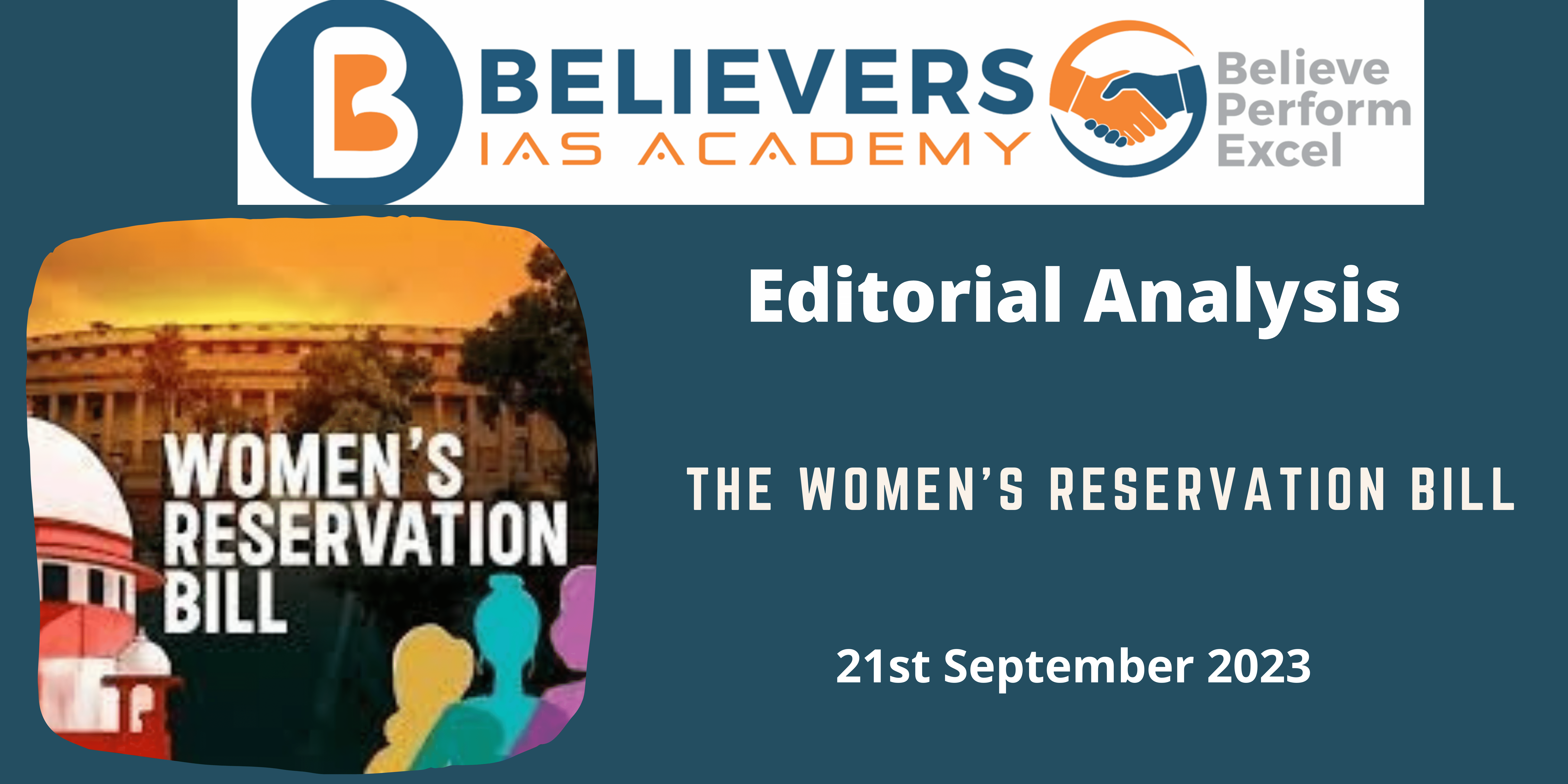The Women’s Reservation Bill
Context:
The recent passage of the Women’s Reservation Bill in the Lok Sabha, nearly three decades after its initial introduction in Parliament, marks a significant step towards breaking a longstanding political barrier.
Background:
- In a Lok Sabha where women Members of Parliament represent a mere 15% of the total, the stark gender inequality in political representation calls for attention and action. The 128th Constitution Amendment Bill, known as the Nari Shakti Vandan Adhiniyam, aims to address this by reserving one-third of the seats in the Lok Sabha and legislative Assemblies for women.
- This amendment includes a 15-year sunset clause for the quota, which can potentially be extended. While the historical struggle for women’s reservation has been fraught with challenges and false starts, the Lok Sabha’s approval of the bill is commendable. However, its implementation faces delays due to its linkage to delimitation and the Census, presenting a noteworthy challenge.
Relevance:
GS-02 (Gender, Government Policies and Interventions)
Prelims:
Right to Equality, Women Reservation bill, constitutional provisions related to women empowerment.
Mains Question:
Discuss the significance of the Women’s Reservation Bill in promoting gender equality in political representation in India and the challenges it faces in terms of implementation. (250 words)
Dimensions of the Article:
- Historical Perspective
- Gender Inequality in Political Representation
- Provisions of the Women’s Reservation Bill
- Implementation Challenges
- Local Bodies as a Model
- Broader Challenges for Women
Historical Perspective
- The introduction of the Women’s Reservation Bill is a crucial development in the context of India’s historical struggle for gender equality in politics.
- Despite its initiation almost three decades ago, the bill’s passage signifies a long-overdue recognition of the need to shatter the political glass ceiling that has hindered women’s participation in decision-making processes.
Gender Inequality in Political Representation
- The current composition of the Lok Sabha, where women constitute only 15% of the total members, highlights a glaring gender imbalance in political representation.
- This underrepresentation of women in the highest legislative body of the country raises concerns about the inclusivity and diversity of voices in decision-making.
Provisions of the Women’s Reservation Bill
- The Women’s Reservation Bill seeks to reserve one-third of the seats in the Lok Sabha and legislative Assemblies for women. Additionally, it includes a provision that mandates allocating nearly one-third of the seats reserved for Scheduled Castes and Scheduled Tribes to women.
- While some demands for an internal quota for women of Other Backward Classes have emerged, it is essential to ensure that such discussions do not impede the bill’s implementation.
Implementation Challenges
- Despite its approval in the Lok Sabha, the implementation of the Women’s Reservation Bill faces hurdles related to delimitation and the Census. The linkage between delimitation and the principle of women’s reservation raises questions about the necessity of such a connection. As a result, women may not have access to the 33% reservation in the upcoming 2024 general election.
Local Bodies as a Model
- Panchayati raj institutions, have shown good examples by having women representation with exceeding 50% in several States.
- Lessons can be drawn from the experiences of women at the grassroots level who have overcome various challenges, including patriarchal attitudes and limited recognition in official roles, to make a meaningful impact.
Broader Challenges for Women
- Women in India confront numerous challenges like unequal access to healthcare, nutrition, and education, as well as inadequate safe spaces.
- Moreover, India having the lowest female labor force participation among G-20 countries at 24%, there has been a decline in female workforce participation.
Way Forward:
As the Women’s Reservation Bill progresses toward becoming law, it is imperative to fine-tune proposals and measures to ensure that the legislation results in meaningful political representation for women rather than symbolic gestures. Local governance models, where women have excelled, should serve as a source of inspiration and practical insights. The emphasis should be on overcoming the multifaceted challenges faced by women, ranging from social and cultural barriers to unequal access to resources and opportunities.





